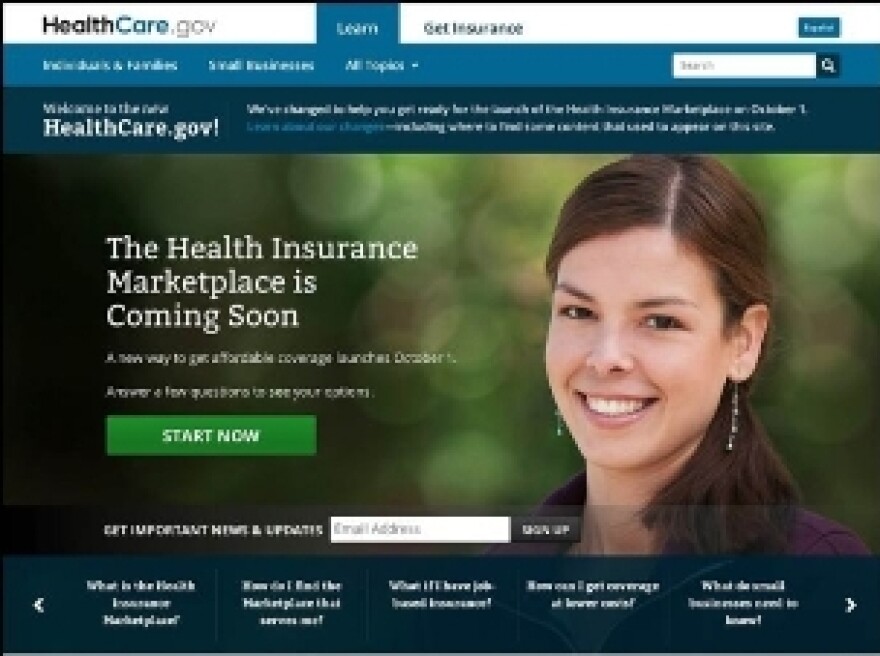How affordable will health plans offered on insurance exchanges really be? That’s the question many consumer advocates are wondering in the weeks leading up to the opening of the exchanges.
Those online marketplaces are a key part of the Affordable Care Act, or ObamaCare. Supporters have played up promises of subsidies, better benefits and lower out-of-pocket costs for consumers, but with three weeks left before the marketplaces go live, there are still no firm numbers about how much health insurance plans will cost.
“In Florida, it’s not unusual for rates to be filed and approved very late in the quarter before they’re going to be used. Companies have told me they’ve had rates approved a week or two before they went into effect," says Rose Naff, head of the group Florida Health Choices.
Florida Health Choicesis an online health insurance marketplace, but doesn’t qualify as an exchange under the federal health law. Naff says a lack of clarity on insurance rates might be a smokescreen. She believes the federal government does know how much insurance will cost—it's just not saying yet:
“It takes an extended period of time to actually load the products and rates. You have to know what they are before they’re loaded, and they have to be tested to make sure they’re displaying properly, and in my experience, that’s usually a six week process.”
So far, that information hasn’t been made public. An official with the Department of Health and Human Services says specific rate information won’t be available until at least the middle of September. And while Florida officials have preliminary information on state-based insurance plans, those numbers haven’t been finalized.
Without firm cost figures, many groups are left guessing. Florida insurance officials have estimated costs could rise as much as 40 percent. But a recent studyby the non-partisan RAND Corporation suggests that might not be true:
“For the state of Florida, we found no change in premiums in 2016 in scenarios with and without the Affordable Care Act," says Christine Eibner, a senior economist at RAND.
Eibner says her group did not look at the costs insurers were submitting for 2014—when the plans go into effect. Instead, their data was based on estimates two years from now:
“We wanted to look at the long-term effect of the Affordable Care Act, and one of the uncertainties of 2014 is that there are so many things that have to work operationally. There’s uncertainty about how people will perceive the law, how they’ll react to certain things, that’s it’s very difficult to predict how premiums will respond that initial year.”
Meanwhile, Florida’s numbers, based on information submitted by insurers, show an initial spike in rates for 2014.
Karen Woodall, Executive Director of the left-leaning Florida Center for Fiscal and Economic Policy, has been following the development of state and federal insurance exchanges closely. Woodall says while most people are focused on the “affordable” part of the Affordable Care Act—they miss another part: patient protections. Those are strengthened under the law, along with additional benefits such as free preventative care and caps on out-of-pocket costs. But even with big subsidies, some people, especially at the lower end of the income scale, could still find purchasing health insurance on the exchanges unaffordable:
“Are we still going to have people who it’s just not affordable to them based on their other costs and expenses out of their control? Yes. That’s why there’s going to be the ability for people to get hardship exemptions so they don’t have to meet the individual mandate for participating in coverage," she says.
Federal subsidies are available to individuals making between $16,000 and $46,000 dollars a year. For families, it’s between $47,000 and $94,000. But even if premiums are less than $25 a month for someone making $16,000 a year, the out-of-pocket deductible could be 100 times that – or more than an eighth of that person’s yearly salary.
The exchanges are set to open October first, and most observers say it’ll take until then to see exactly how much insurance will cost, and who can afford to pay for it.



